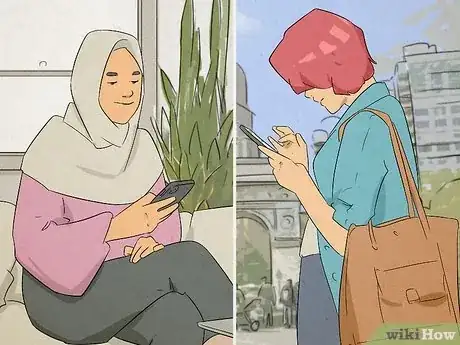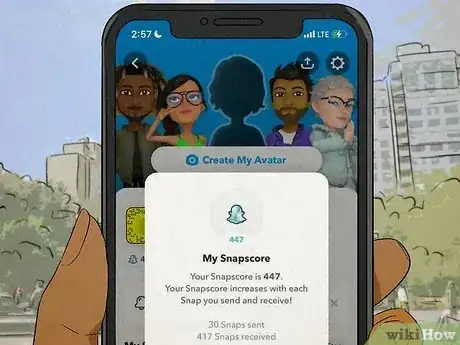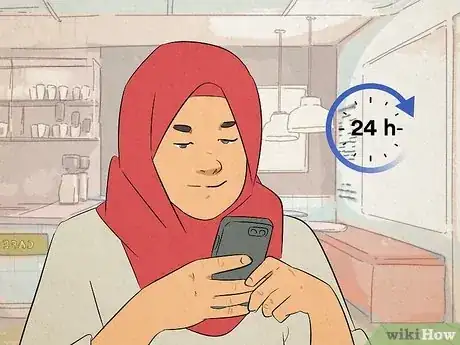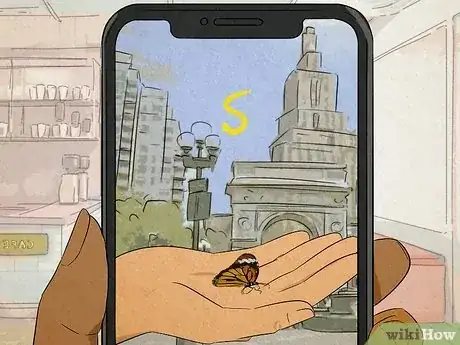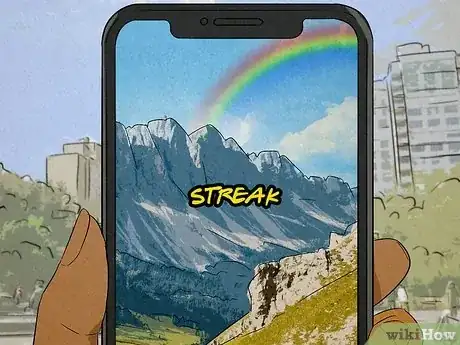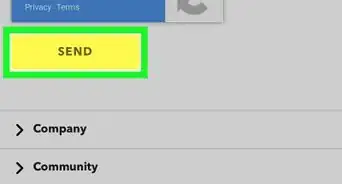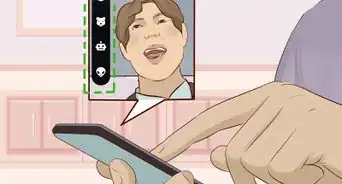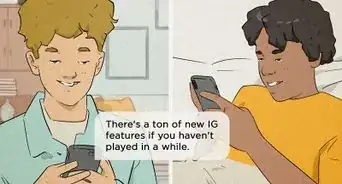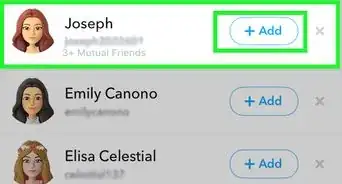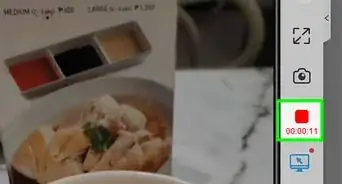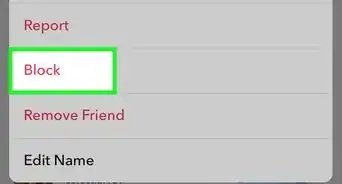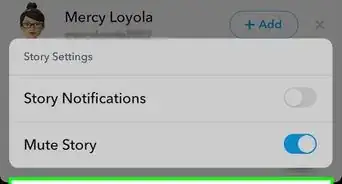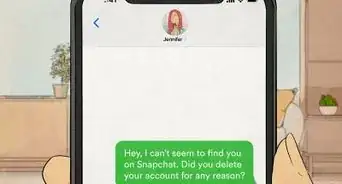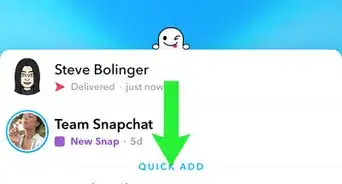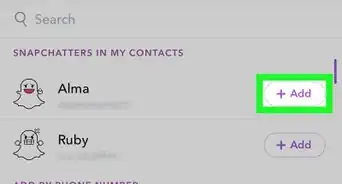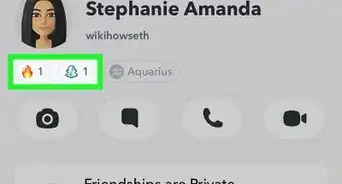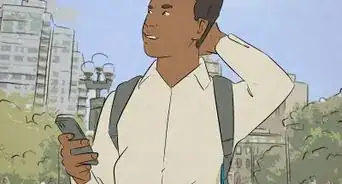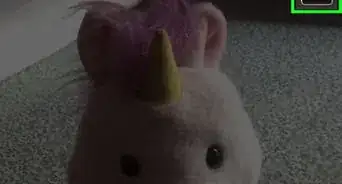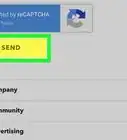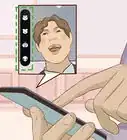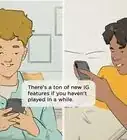This article was co-authored by wikiHow staff writer, Finn Kobler. Finn Kobler graduated from USC in 2022 with a BFA in Writing for Screen/Television. He is a two-time California State Champion and record holder in Original Prose/Poetry, a 2018 finalist for the Los Angeles Youth Poet Laureate, and he's written micro-budget films that have been screened in over 150 theaters nationwide. Growing up, Finn spent every summer helping his family's nonprofit arts program, Showdown Stage Company, empower people through accessible media. He hopes to continue that mission with his writing at wikiHow.
There are 8 references cited in this article, which can be found at the bottom of the page.
This article has been viewed 2,444 times.
Learn more...
Has someone snapped you an S and now you’re completely lost trying to figure out what it means? Snapchat is filled with a lot of abbreviations and it can be tough to keep track of them all. Just one simple letter can seem incredibly complicated. But don’t worry; in this article, we’ll break down how S translates on Snapchat. Keep reading and you’ll be able to read and reply with ease!
Things You Should Know
- On Snapchat, S stands for streaks. People are sending it to notify you they want to start or continue a snapstreak with you and up their snap scores.
- Make sure to respond to S within 24 hours by sending a snap back or your snapstreak will die.
- There are plenty of creative ways to spice up your snapstreak photos including the pen feature, stickers, and bitmojis.
- If you have a particularly long streak with someone, they’ll likely make your Snapchat “Best Friends” list.
Steps
Why do people send S on Snapchat?
-
1They want to keep a conversation going. Snapstreaks are great ways to maintain contact with your friends, even if you don’t feel like having a long, meaningful talk every day. By sending S for snapstreak, someone is telling you that they’re thinking about you and don’t want this conversation to die out.[2]
-
2They want to prove and maintain their friendships. Regular communication is key to maintaining friendships. Snapstreaks are a great way to keep this communication alive. Alternatively, someone may be sending you snapstreaks to prove how highly they value your friendship over others, since you can become “Best Friends” on Snapchat with regular interaction. And you can only have a limited number of “Best Friends” at a time.[3]
-
3They want to increase their snap score. Snapstreaks are an easy way for people to increase their Snapchat scores. While snap scores are purely for fun, some people enjoy increasing theirs. By keeping a snapstreak with you, they’re adding easy points.[4]
How to Reply to Snapstreaks
-
1Respond within a day. The most important part of replying to a snapstreak is sending a message back within 24 hours. If you wait longer, the streak will die and the whole purpose of the S message will be unfulfilled.[5]
-
2Use the pen feature. A lot of people like to send S for snapstreaks by drawing it out with the pen feature instead of just typing the letter. After you’ve taken your photo, go to the top right corner, click the pen and draw an S in your favorite color!
-
3Send some stickers. There are plenty of stickers that say “streaks” which make for a great, creative response. Located in the top right corner, you can search the word “streak” or “snapstreak” in the stickers option and choose your favorite(s) to add to your picture.[6]
-
4Show off your bitmoji. Personalize your streaks by giving your friend a visual of how you’re feeling. To make your bitmoji, swipe down on the camera screen and hit the “+” in the top-left corner. From there, you can stylize your bitmoji avatar to resemble you. Once you download the Bitmoji Keyboard app, you can add your bitmoji to your pics in all kinds of silly situations.[7]
Other Meanings for S (Online and Over Text)
-
1/S means someone’s message is sarcastic. If you see /s as punctuation for a sentence on social media or in a text, someone is indicating that the tone of the sentence is sarcastic. Since feelings can easily be lost in translation when talking digitally, this indicator makes their attitude crystal clear.[8]
- “Doing my taxes is thrilling /s”
- “Well, aren’t you a bag of sunshine today? /s”
- “How dare you send me flowers /s”
-
2People send /s to be inclusive and prevent miscommunication. Because digital spaces offer so little context (we can’t see someone’s body language, we can’t hear the intonations of their voice), using tone indicators like /s prevent misinterpretation. Allies of the neurodivergent community, especially, use tone indicators to help people who struggle with nonverbal communication feel accepted. [9]
References
- ↑ https://techqlik.com/what-does-s-mean-on-snapchat/
- ↑ https://yourteenmag.com/technology/whats-a-snapchat-streak
- ↑ https://support.snapchat.com/en-US/a/best-friends
- ↑ https://www.businessinsider.com/guides/tech/how-does-snap-score-work
- ↑ https://yourteenmag.com/technology/whats-a-snapchat-streak
- ↑ https://support.snapchat.com/en-US/a/add-stickers
- ↑ https://support.snapchat.com/en-US/article/enable-bitmoji-keyboard
- ↑ https://toneindicators.carrd.co/#masterlist
- ↑ https://ijssrr.com/journal/article/view/118


